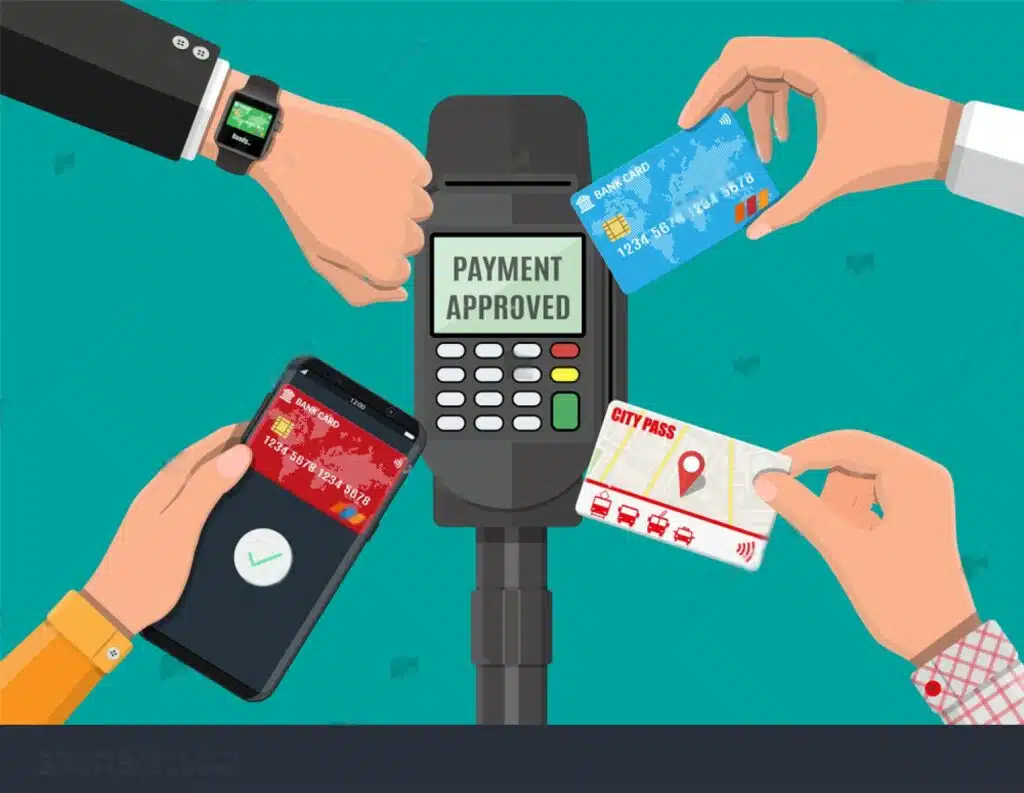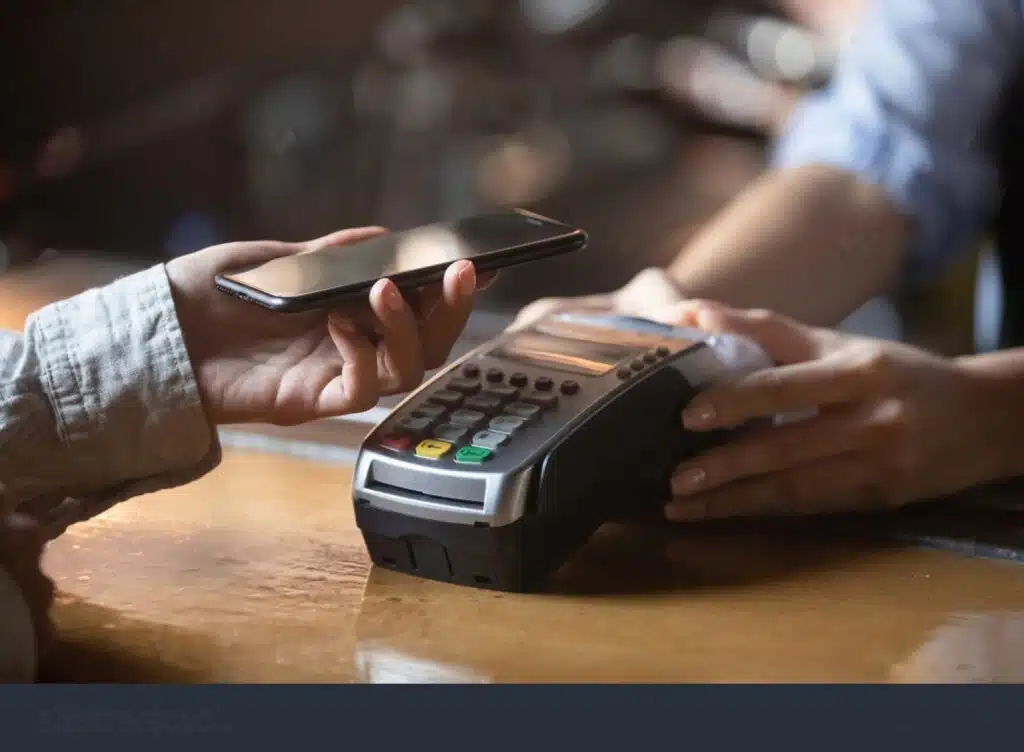
A cashless economy is a way of doing business and buying things without using physical money. Present age is the digital age where cash is no longer king. It’s no surprise that India is moving towards becoming a cashless economy. The money is stored in cards or smartphones electronically. It’s like having a type of invisible money that you can use to buy things. Here are 5 amazing examples essay on cashless India.
Essay on Cashless India- 100 Words
India is moving towards a cashless future. We are changing the way we make payments. A cashless India means using digital methods for payments. We don’t use physical money in a cashless economy. It brings comfort and safety to transactions. With digital payments, we can shop online, pay bills, and transfer money more quickly. Cashless transactions reduce the risk of theft. They also make it easier to track expenses. It also helps people to learn more about money and how to use it responsibly. Everyone can participate in a digital economy. Using a cashless system in India makes it easier for us to handle our money. save time and contribute to a more efficient and progressive society.
Cashless India Essay- 150 Words
India is undergoing a revolution. Our country is swiftly progressing towards becoming a cashless society. This means we are shifting from using physical currency like notes and coins to electronic forms of payment. The main goal behind this change is to fight corruption and control the use of unaccounted money.
To promote digital payments, the government has implemented various measures. Demonetization in 2016 was one such step. Along with the introduction of several schemes government also launched their digital payment apps like the BHIM app and Aadhaar Pay. The private sector has also played a significant role by introducing their own payment platforms such as Google Pay, PhonePe, Paytm etc.
The transition to a cashless economy benefits not only the government but also individuals. Cashless transactions provide easy access to financial services and reduce the risk of theft. However, there are challenges to overcome, especially the lack of infrastructure in rural areas, which limits people’s access to these services.
In conclusion, the shift towards a cashless India has both advantages and disadvantages. Embracing digital transactions instead of physical money can lead to a more transparent and efficient economy. It means we don’t have to rely on coins and notes as much.
Also Read:
- Essay on Beti Bachao Beti Padhao
- Powerful Essay on Animals in English
- Essay on Conservation of Plants and Animals
- Essay on How Animals Are Useful to Us
- 5 Amazing Essays on Pet Animals

Essay on Cashless India- 200 Words
Are you tired of carrying heavy wallets and losing cash now and then? Well, the solution is here – Cashless India! In recent years, the Indian government has been pushing for a digital economy to reduce corruption, increase transparency, and promote financial inclusion. The concept of going cashless might seem difficult at first, but once you understand its benefits, it can revolutionize the way we transact in our everyday lives.
In the future, we want India to become a cashless country. It means we won’t need to carry money in our pockets. Instead, we can use special ways to pay for things using our phones or cards. These special ways are called digital payments. We can use mobile wallets, credit cards, or UPI to buy things without using coins or notes. It’s convenient, safe, and makes everything easier. We can pay for things with just a few taps on our phones.
But there are some things we need to think about before making India completely cashless. Not everyone has access to digital technology or knows how to use it. Some people might feel uncomfortable using phones or computers for payments. We also need to be careful about cybersecurity. It means we also need to protect our online payments from hackers. These are important challenges we need to solve before we can have a cashless India for everyone.
Essay on Cashless India | 300 Words
Imagine a world where you don’t need to carry physical money. That’s what a cashless India is all about. It means using digital methods like mobile wallets, online banking, and cards to pay for things.
It’s like having a virtual wallet. This makes shopping online super easy. No more long queues or worrying about having exact change. It’s convenient and saves time.
One of the coolest things about a cashless India is the safety it offers. When you use digital payments, you don’t have to carry a lot of cash, which means there’s less risk getting it stolen. Plus, every transaction leaves a digital trail, making it easier to keep track of your expenses. You can see where your money goes and plan your budget better. It’s like having your own money superhero!
Going cashless could also help to boost the economy by making it more efficient. For example, businesses would no longer need to handle large amounts of cash, which can be costly and time-consuming. Similarly, consumers would be able to make payments more quickly and easily using their mobile phones or other devices.
However, there are also challenges that need addressing before we can realize this vision fully. For instance, rural areas still lack internet connectivity and digital literacy; cybercrime is also on rise; privacy concerns remain unresolved. And not all small vendors accept online payments yet. In short, achieving a truly cashless India requires sustained efforts from all stakeholders – citizens, banks, regulators – to overcome these hurdles.
Cashless India also promotes financial addition. It means that everyone, no matter where they live or how much money they have, can participate in the digital economy. Even people who don’t have bank accounts can use mobile wallets to pay for things. This opens up opportunities for everyone to be a part of India’s progress. It’s like giving wings to dreams and empowering people to chase their goals.
In conclusion, a cashless India brings convenience, safety, and financial stability. It’s a digital revolution that benefits everyone.

Essay on Cashless India | 500 Words
India has been moving towards a cashless economy for some time now, and it’s exciting to see all the changes that come with it. From digital payment apps to contactless payments, there are plenty of options available for those who want to embrace this new way of living.
But what does a cashless India really look like? Let’s explore the benefits and challenges of making the transition from cash-based transactions to digital ones.
However, this is changing. The Indian government is promoting the use of plastic money and digital payments, in a move to make India a cashless society.
The transition to a cashless economy will not be easy, but it is necessary in order to realize the full potential of the Indian economy.
Meaning of Cashless India?
Cashless India refers to a digital payment ecosystem where financial transactions are conducted without the use of physical cash. This means that money is transferred electronically through various modes of online payments. These payments can be through debit/credit cards, mobile wallets, UPI (Unified Payments Interface), and other digital platforms.
This would reduce the role of cash in the economy and make it easier for the government to track spending and collect taxes.
There are many advantages to moving towards a cashless society. it would help to reduce crime, as criminals would no longer be able to get away with stealing physical money. Cashless transactions are often faster and more convenient than paying with cash.
Advantages of Cashless India
The transition towards a cashless society in India presents both advantages and drawbacks. Advantages include increased convenience as digital transactions are faster, easier to make, and more secure than traditional cash payments. Additionally, it can help curb corruption by reducing the prevalence of black money and illegal activities. Let’s see in detail-
Convenience and Accessibility- Cashless transactions offer convenience and accessibility to individuals across the country. With digital payment methods, people can make transactions anytime and anywhere, without the need to carry physical cash. This ease of use is particularly beneficial in situations where immediate payments are required or when physical currency is not readily available.
Enhanced Security- Cashless transactions provide a higher level of security compared to traditional cash transactions. When using digital payment methods, there is no risk of loss due to theft or misplacement of physical currency. Additionally, measures such as encryption, biometric authentication, and two-factor authentication help protect users’ financial information and minimize the chances of fraud.
Transparency and Accountability- Moving towards a cashless economy promotes transparency and accountability in financial transactions. Digital payment systems generate electronic records of every transaction, making it easier to track and monitor financial activities. This can help in combating corruption, money laundering, and other illicit activities, as well as facilitate better tax compliance.
Financial Inclusion- One of the significant benefits of a cashless India is the potential to increase financial inclusion. By providing access to digital payment systems, even to those without a traditional bank account, more individuals can participate in the formal financial ecosystem. This empowers people to save, borrow, and engage in economic activities, fostering economic growth and reducing income inequality.
Cost Efficiency for both Public and Government- Adopting digital payment methods can lead to cost savings for both individuals and the government. Cash transactions involve the printing, transportation, and storage of physical currency, which incurs expenses. On the other hand, digital payments significantly reduce or eliminate these costs, making transactions more efficient and cost-effective in the long run.

Disadvantages of Cashless India
On the other hand, one of the major concerns with going cashless is accessibility for low-income families who may not have access or knowledge about digital payment methods. It also poses a risk for individuals who are digitally illiterate or those living in remote areas without proper internet connectivity.
Dependency on Technology- A cashless society relies heavily on technology and digital infrastructure. Any disruption in connectivity, power outages, or technical glitches can hinder transactions, leaving people without the means to make payments.
Cybersecurity and Data Privacy Risks- Cashless transactions involve the exchange of sensitive personal and financial information. This data is susceptible to cyberattacks, hacking, or data breaches, which can lead to identity theft or financial loss. Safeguarding cybersecurity and ensuring robust data privacy measures are essential to mitigate these risks in a cashless society.
Limited Acceptance and Interoperability- Despite the growth of digital payment options, there are instances where cash is still the preferred mode of transaction. Small businesses, street vendors, and rural establishments may not have the necessary infrastructure or acceptance mechanisms for digital payments. Limited acceptance and interoperability can create inconvenience and limit the usability of digital payment systems.
Technological Disruption and Skill Gap: Transitioning to a cashless economy requires a significant shift in behavior and mindset. It may disrupt traditional businesses and livelihoods that heavily rely on cash transactions. Moreover, it can create a skill gap among sections of the population who may not be familiar with or resistant to adopting digital payment methods, hindering their participation in the economy.
How to Go Cashless in India
Going cashless in India may seem challenging for some, but it’s actually quite easy. Here are a few tips to help you make the transition:
1.Get familiar with digital payment apps: There are several popular digital payment apps in India such as Paytm, Google Pay, PhonePe and more. Download one or two of them and get comfortable with how they work.
2.Link your bank account: Once you have downloaded a digital payment app of your choice, link your bank account with the app so that you can easily transfer money from your bank to the app.
3.Use UPI (Unified Payment Interface): UPI is an instant real-time payment system developed by National Payments Corporation of India facilitating inter-bank transactions. It allows users to instantly send and receive money using a virtual ID linked to their bank account.
4.Educate yourself about online payments: Before making any online purchase, ensure that the website is secure and has SSL encryption enabled to protect your personal details.
What are the Different Payment Methods in India?
India is a country that has embraced digital payment methods over the past few years, and there are several options available to consumers.
Firstly, there are mobile wallets like Paytm, PhonePe, and Google Pay which allow users to store money digitally on their smartphones and make payments at participating merchants. These wallets also offer cashback rewards for certain transactions.
Secondly, debit and credit cards are widely accepted in India with most businesses having enabled card machines for payment processing. This method of payment is secure as it requires authentication through a PIN or signature.
Thirdly, Unified Payments Interface (UPI) allows users to transfer funds between bank accounts instantly using just an email address or mobile number. This system eliminates the need for bank account details making it easier to send money even without knowing the recipient’s account number or IFSC code.
Net Banking is another popular option where customers can log into their banks’ online portals from anywhere in the world and conduct transactions such as paying bills or transferring funds.
India offers a diverse range of payment options that cater to different needs of consumers while promoting financial inclusion by allowing more people access to formal financial systems.
Challenges in Transforming India into Cashless Economy

Despite the government’s push to make India a cashless economy. There are still many challenges that need to be addressed.
Lack of Infrastructure – One of the biggest challenges is the lack of infrastructure and access to banking services in rural areas. According to a report by the RBI, only about 35% of households in rural areas have access to formal banking services. This means that a large majority of the population is still reliant on cash transactions.
Low Rate of Financial Literacy- Another challenge is the low rate of financial literacy in the country. A study by the National Financial Inclusion Strategy found that only 53% of adults in India are financially literate. This means that many people do not understand how to use digital payment methods or are unaware of the benefits of going cashless.
Concerns about Security and Privacy- There are also concerns about security and privacy when it comes to digital payments. With so much personal and financial data being stored online, there is a risk of it being hacked or leaked. There have been several high-profile cases of data breaches in recent years, which has made people wary of using digital payment methods.
Despite these challenges, the government is still working towards its goal of making India a cashless economy. It has launched several initiatives to promote digital payments and is working on improving infrastructure and access to banking services in rural areas. With time and more awareness, it is hoped that India will successfully make the transition to a cashless society.
Conclusion
The shift towards a cashless economy is an exciting prospect for India. While it is true that there are some downsides to going cashless, such as concerns about cybersecurity and privacy, these can be addressed by implementing appropriate regulations and security measures.
The benefits of a cashless society far outweigh the drawbacks. Cashless transactions make life easier for everyone involved: merchants, consumers, and government agencies alike. They also help to reduce corruption and promote financial inclusion.
There are many different payment methods available in India today, from mobile wallets to UPI transfers. Choosing the right method for your needs will depend on factors like convenience, security features offered etc.
As more people embrace digital payments in India we hope that this trend will continue to grow until one day soon we can truly say that our country has become fully cashless!
FAQs
1.Can India really become a cashless economy?
Ans : It is possible for India to become a cashless economy, but it will take time and effort. People would need to use digital methods like mobile payments, online banking, and cards instead of physical cash.
What are the effects of a cashless scheme in India, on the Indian economy?
A cashless scheme can have positive effects on the Indian economy. It can make transactions faster and more efficient. It can also help reduce corruption and the use of counterfeit money. However, it may also create challenges for people who are not familiar
2. What is the effect of demonetization on cashless transactions in India?
Ans : Demonetization, which happened in 2016, aimed to reduce the circulation of certain currency notes. It led to a push for digital payments and increased awareness about cashless transactions in India. Many people started using digital payment methods after demonetization.
3. What would be the effect on banking sectors, if India goes cashless?
Ans :If India becomes a cashless economy, the banking sector would play a crucial role. Banks would need to provide secure and convenient digital payment services. It could lead to an increase in online banking and mobile payment usage, benefiting the banking sector in the long run.
4. Why did India choose only the cashless economy?
Ans :India didn’t choose to go completely cashless, but it aims to promote digital payments as a convenient and secure alternative to cash. The government wants to reduce the use of black money, improve financial transparency, and promote financial inclusion by making digital payment methods accessible to all.